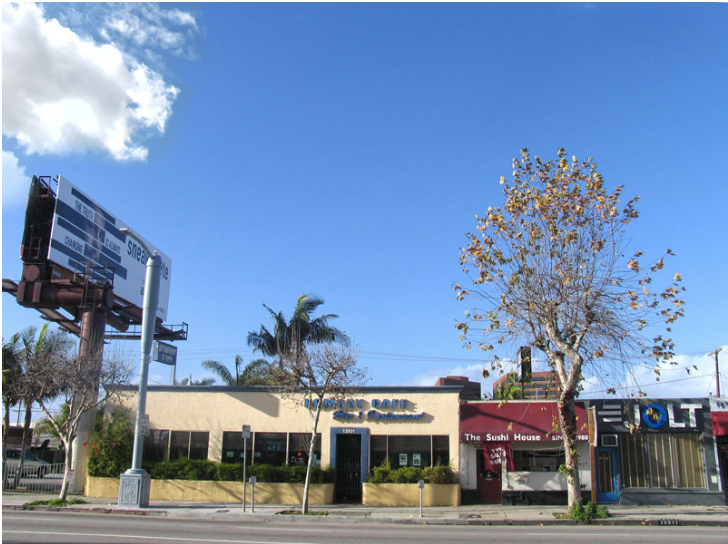CommentsPLATKIN ON PLANNING-Time to debunk the five tall tales crammed into the two short sentences below to lobby for Scott Wiener’s Senate Bill 50, legislation whose not-so-well-hidden-agenda is to boost profits from commercial and residential real estate.
From an email to unsuccessfully stop the Los Angeles City Council from opposing Senate Bill 50:
“Help Abundant Housing build support for CA Senator Scott Weiner's More HOMES Act, which would remove apartment bans near public transit across the state. In promoting dense, transit-friendly development, this bill is a welcome step in addressing the state's shared housing and climate crises and ensuring California is inclusive and sustainable for generations to come.”
Tall tale #1, “CA Senator Scott Wiener’s More Homes Act.” This is the official name for SB 50, but this act is a real estate bill, not a housing bill. While Senator Wiener submitted the bill, a real estate lobbying group, California YIMBY, co-sponsored and presumably drafted it.
If the State Legislature adopts this bill, it will substantially up-zone most commercial, as well as many residential and manufacturing parcels in California. Their size, height, density, and other zoning restrictions will be lifted through a top-down decree from Sacramento. After that, few real estate projects will be subject to environmental reviews because they will qualify for CEQA-exempt ministerial (administrative) approvals. Furthermore, the legislation will:
-- NOT allocate any funds for the construction of affordable housing.
-- NOT furnish cities with grants to update and improve their legally required General Plan Housing Elements. California cities, like LA, will not get any State assistance to assess their local housing crisis, including who is homeless, why they are homeless, who has been evicted, who lives in overcrowded conditions, where vacancies exist, what tenants pay for apartment rentals, and who lives in pledged affordable housing.
-- NOT require cities to monitor their Housing Elements, including data on housing potentially produced from SB 50 upzoning, as well as the demographics and transportation behavior of tenants in these buildings. This is key because upzoning only works when it is concurrent with a real estate boom. When, not if, California’s real estate market again plummets, no amount of up-zoning -- such as SB 50 -- can salvage it. SB 50 won't help cash-strapped developers and renters dodge the next real estate bust.
Tall tale #2, “Remove apartment house bans near public transit.” In California’s largest city, Los Angeles, this tall tale is total nonsense. Nearly all existing and proposed METRO, light rail, and Rapid and Express bus lines are on LA’s endless, low-rise commercial corridors, such as Pico Boulevard, shown below. These transit corridors are already zoned for commercial uses, which means that developers can already construct large, by-right apartment buildings there under existing zoning laws. On these thousands of miles of transit corridors, investors and contracts could quickly pull building permits for apartment buildings since they do not need to beat back imaginary bans. This is why LA’s existing zoning could produce a build-out population of 6.9 million people, most of it based on the construction of apartment buildings on these long, low-rise, under-utilized boulevards.

Low rise buildings on Pico Boulevard, one of LA’s many long transit corridors that could instantly sprout five story apartment buildings.
Furthermore, this zoning, plus all R-3 and R-4 lots, as well as half of the LA’s manufacturing zones, can take advantage of LA’s two density bonus programs to increase their height, mass, and density by another 25 percent. This lifts LA’s build-out population to 9 million people, without SB 50. Clearly, what is needed from the State of California is massive planning and funding for public services and infrastructure, not new zoning layered on top of under-utilized existing zoning. This funding would allow cities, like LA to properly plan and upgrade their deteriorating public services and infrastructure in order to serve the increased population densities potentially generated by SB 50 and existing density bonus programs.
Tall tale #3, “Promote dense, transit friendly development.” If SB 50 is lucky enough to coincide with a prolonged real estate bubble, it could play a minor role in promoting dense development. But, without annual monitoring, it is impossible to determine how many of these real estate projects would have happened without SB 50. Why? Because LA already has generous zoning and easily obtained density bonuses through SB 1818 and TOC Guidelines.
Furthermore, no amount of luck will transform SB 50 into a program that increases transit ridership. As is already obvious in LA and other cities, Transit Oriented Development (TOD) is not transit friendly because TOD is expensive market housing whose residents pay top dollar for their rents. Nearly all of these tenants own and drive cars and seldom take transit. This is why METRO’s Express, Rapid, and regular bus lines, as well the Red and Purple Lines, all feature dramatically declining ridership despite population growth and many new TOD projects. The claim that TOD boosts transit ridership is bogus because it does the opposite. It decreases transit ridership.
If Senator Wiener and California YIMBY truly wanted to increase transit ridership, they would not upzone the state. Instead, they would co-sponsor legislation to make transit more affordable, appealable, and accessible. Transit riders need their landlords to provide free TAP cards. They also need good cell phone apps, frequent service, reduced fares, bus shelters, clean and safe buses, easy transfers, and many more on-site and adjacent public improvements. They do not need new, expensive apartments that happen to be built near bus stops and subway stations.
Tall tale #4, “Addressing the state's shared housing and climate crises.” The debunking of Tall Tales 1, 2, and 3 addresses the ludicrous claim that SB 50 will resolve California’s housing crisis. But the tall tale that it will also address the climate crisis is even more absurd. SB 50 does nothing to advance well-planned, compact cities that could, in theory, reduce the generation of Green House Gases. In fact, SB 50 rejects the use of zoning as an implementation program for carefully prepared citywide and local General Plan elements. Instead, it sabotages the entire planning process by up-zoning hundreds of thousands of parcels in LA and elsewhere in California prior to the adoption of the plans required by the City Charter and multiple State laws.
Furthermore, SB 50 does not provide cities with any funds for this essential climate-related planning, including new climate change elements for their legally required General Plans. For that matter, SB 50 has no local or statewide reporting or monitoring requirements to determine its actual climate impacts, such as reductions in Green House Gas levels. What we do know, however, is that SB 50’s broad up-zoning would increase real estate values and profits. These, in turn, lead to expensive residential projects, whose tenants will be well off and largely own and drive cars. Since they seldom take transit instead of their cars, SB 50 will increase, not decrease, Green House Gas levels.
Tall Tale #5, “Ensuring California is inclusive and sustainable for generations to come.”
With in singular focus on real estate profits by upzoning hundred of thousands of parcels, SB 50 will put the existing gentrification process into overdrive. More, not fewer existing tenants will be pushed out through Ellis Act evictions, cash and key buyouts, and deliberate neglect. Few of these evictees will find comparably-priced housing, forcing them live in over-crowded units and cars, move out of Los Angeles, or end up homeless. This legislation hardly supports inclusive cities, and it ensures that until the next crash in cities like LA will feature transit-adjacent oases for the well off, surrounded by homeless people living in the shadows of new, pristine apartment buildings.
As for the parallel tall tale that SB 50 would make California more sustainable, that is “greener”, the proposed legislation fails to include any inspection or monitoring mechanisms. Therefore, there will no direct evidence that SB 50-induced housing reduces energy consumption, traffic congestion, and Green House Gas emissions. Like the other tall tales, this will remain an empty claim. But, transit agencies post their ridership trends, and in cities like Los Angeles, this information documents long-term reductions in transit ridership, despite population growth and the construction of many new apartment buildings near transit. Even without direct SB 50 monitoring, it will be easy to document that SB 50 would make a sustainable California even more remote.
(Dick Platkin is a former Los Angeles city planner who reports on local planning controversies in Los Angeles. He serves on the board of United Neighborhoods for Los Angeles (UN4LA) and welcomes comments and corrections at [email protected].) Prepped for CityWatch by Linda Abrams.
















